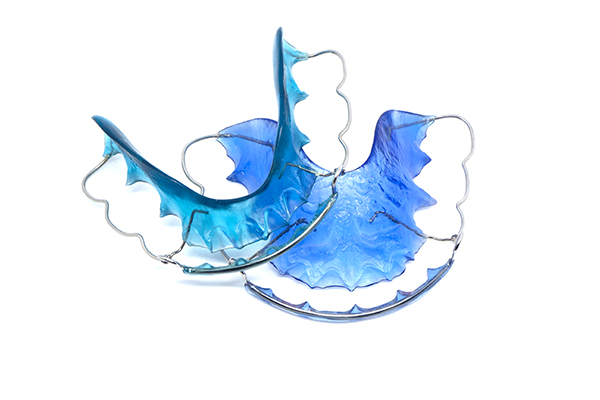What Are Orthodontic Retainers Used For?

Wondering about the importance of orthodontic retainers? Read on to learn about how these retainers help protect your alignment after teeth-straightening treatment. If a person has gone through orthodontic treatment using braces or aligners then they may be wondering what happens after that treatment is over.
A person is typically advised to wear an orthodontic retainer after their treatment of braces or aligners is over. Knowing what orthodontic retainers do, why they’re needed and how they can help a person is important.
An overview of orthodontic retainers
Although orthodontic treatment may appear to end after the braces are removed or the aligners are taken out, the treatment process isn’t actually quite over yet. An orthodontic retainer is typically custom-created personally for the patient’s mouth in order to ensure that the teeth stay in straight shape from there on out.
While most orthodontists do not require that their patients wear their orthodontic retainers all of the time, it is still great to wear it as much as possible in order to maintain the straight teeth that one had worked so hard for. The maintenance of orthodontic retainers is relatively easy.
Structure
The structure of the teeth is important to maintain because the structure helps to keep the teeth straight and strong after braces or aligners are removed. An orthodontic retainer will give someone the structure that they need when adjusting to their straight teeth being bare.
The structure can be provided through an orthodontic retainer because it holds the teeth in place when they are not being used. The retainer doesn’t allow for the teeth to shift over time, but rather it keeps them held in their spots in order to maintain their straightness.
Protection
While orthodontic retainers are primarily used in order to maintain straightness and shape, they are also beneficial when it comes to protecting the teeth. When the teeth are done with orthodontic treatment, they are especially sensitive and prone to damage. Having a retainer in can provide extra protection behind the teeth so that they are fully supported and less likely to be damaged.
Orthodontic retainers aren’t the most comfortable thing in the world but they can be really beneficial to people who want to maintain their straight teeth. The teeth often shift over time, even after braces or aligners are worn, so having a retainer in at times can help reduce any major shifts in the teeth.
Frequently asked questions about orthodontic retainers
Here are answers to some of the questions you might have about orthodontic retainers:
1. What is an orthodontic retainer?
An orthodontic retainer is a device worn after braces are removed to keep teeth from moving back into their original position.
2. How long do I need to wear my retainer?
Your orthodontist will determine the length of time you will need to wear your retainer. However, it is typically recommended that you wear your retainer for at least six months to one year after removing your braces.
3. Can I eat with my retainer in?
No, you should not eat with your retainer as it can cause tooth decay or staining. Additionally, food can get stuck in the retainer and be challenging to remove.
4. How do I clean my retainer?
You should brush your retainer with toothpaste and water at least once daily. Additionally, you can soak your retainer in a denture cleaning solution to help remove any build-up.
5. My retainer does not seem to fit well anymore; what should I do?
If your retainer does not seem to fit well, you should contact your orthodontist as soon as possible. They may need to adjust the fit of your retainer or give you a new one altogether.
6. I lost my retainer; now what?
If you lose your retainer, you should contact your orthodontist as soon as possible. They may be able to give you a new one or advise you on what to do next. Additionally, you can try using a retainer-tracking app to help you locate it.
Keep your new smile intact with orthodontic retainers
If you have questions about orthodontic retainers, contact our orthodontic office today. We are happy to answer any questions or concerns that you might have regarding the use of retainers for orthodontic purposes. Give us a call to schedule an orthodontic consultation appointment so we can go over your treatment options.
Request an appointment here: https://paramountdentalspecialty.com or call Paramount Dental Care & Specialty at (562) 450-1261 for an appointment in our Long Beach office.
Check out what others are saying about our dental services on Yelp: Orthodontics in Long Beach, CA.
Related Posts
Endodontics is the field of dentistry that focuses on diagnosing and treating issues related to the inner part of the tooth, such as the pulp and surrounding tissues. By addressing these problems, endodontics helps preserve natural teeth and maintain oral health. Dentists trained in this field use advanced techniques to relieve pain and restore dental…
A dental bridge is a restorative treatment that fills the gap left by a missing tooth. These restorations feel similar to natural teeth and prevent additional oral health issues from arising due to gaps in the smile. Qualifying for dental bridges is also easy. Most patients find they qualify, and if they do not, they…
Dental bridges are long-lasting tooth replacements. However, like anything, they sometimes need to be repaired or replaced. A general dentist can install, maintain, and repair bridges to help patients get the most out of these effective dental restorations.Before understanding dental bridge repair, it is important to understand how dental bridges work as a restorative treatment.…
When it comes to replacing missing teeth, dental bridges are a popular and reliable option that offers versatility by restoring one to four missing teeth in a row. Along with restoring a smile by replacing missing teeth, a dental bridge offers multiple benefits to one's oral health while addressing several issues simultaneously.Tooth loss can occur…
